-
 +3 +1
+3 +1Dark Energy May Not Exist: Something Stranger Might Explain The Universe
There might not be a mysterious 'dark' force accelerating the expansion of the Universe after all.
-
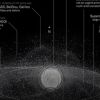 +36 +5
+36 +5The Imminence of the Destruction of the Space Program
New calculations put the date much closer than we should be comfortable with
-
 +34 +6
+34 +6NASA is investing in a rocket that could get humans to Mars and back in 2 months — and travel at 100,000 mph
The Pulsed Plasma Rocket could significantly shorten a round-trip to Mars, reduce risks to astronauts' health, and be ready to launch in 20 years.
-
 +27 +5
+27 +5Rocket company develops massive catapult to launch satellites into space without using jet fuel: '10,000 times the force of Earth's gravity'
SpinLaunch is developing a large rotating arm that uses kinetic energy to fling 440-pound satellites into low orbit.
-
 +19 +4
+19 +4We could detect a malfunctioning warp drive on an alien starship
Faster-than-light warp drives are theoretically possible to build, and if aliens are using them, we should be able to detect the gravitational waves produced when one goes wrong
-
 +25 +2
+25 +2New warp drive concept does twist space, doesn’t move us very fast
While it won't make a useful spaceship engine, it may tell us more about relativity.
-
 +19 +2
+19 +2Glow of an exoplanet may be from starlight reflecting off liquid iron
A phenomenon called a "glory" may be happening on a hellishly hot giant planet.
-
 +30 +5
+30 +5NASA's mission to an ice-covered moon will contain a message between water worlds
METI International is a scientific organization dedicated to transmitting powerful radio messages to extraterrestrial life.
-
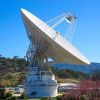 +20 +2
+20 +250 Years Later, This Apollo-Era Antenna Still Talks to Voyager 2
DSS-43 is the only antenna that can communicate with the probe
-
Analysis+22 +3
There's a library on the moon now. It might last billions of years.
From 'Dune' to Dogecoin, the first true backup of human civilization contains a few surprises.
-
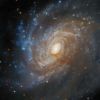 +36 +7
+36 +7NASA Selects New Crew for Next Simulated Mars Journey - NASA
NASA has selected a new crew of four volunteers to participate in a simulated mission to Mars within a habitat at the agency’s Johnson Space Center in Houston.
-
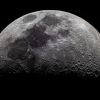 +25 +5
+25 +5Overlooked Apollo data from the 1970s reveals huge record of 'hidden' moonquakes
A reanalysis of 50-year-old Apollo mission data long abandoned by NASA has revealed 22,000 previously unrecognized moonquakes, almost tripling the known number of seismic lunar events.
-
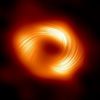 +31 +4
+31 +4Magnetic Fingerprints of The Milky Way's Black Hole Revealed in Stunning Image
The magnetic fields that spiral around our galaxy's supermassive black hole Sagittarius A* have now been revealed by twisted light.
-
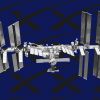 +27 +1
+27 +1FCC Denies Starlink Low-Orbit Bid for Lower Latency
Agency says SpaceX craft could curb International Space Station operations
-
 +21 +4
+21 +4Earth has extra moons, and they may hold the secrets of our solar system's past
Earth's closest cosmic companions, known as 'minimoons' or 'quasi-moons', could hold the secrets to the history of our early solar system.
-
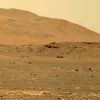 +19 +4
+19 +4NASA is looking for people to test out its Mars simulator for a year
The agency is accepting applicants for the second cohort of its Mars simulator mission. Participants will live and work from a 3D-printed, 1,700-square-foot facility at NASA's Houston space center.
-
 +16 +4
+16 +4It's not just rising sea levels – the land major cities are built on is actually sinking, NASA images show
Images shared by NASA show the U.S. East Coast is actually sinking — including the land that holds major cities like New York and Baltimore.
-
 +22 +7
+22 +7Death, Lonely Death
We thought we knew how Voyager would end. The power would gradually, inevitably, run down. The instruments would shut off, one by one. The signal would get fainter. Eventually either the last instrument would fail for lack of power, or the signal would be lost. We didn’t expect that it would go mad.
-
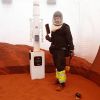 +15 +1
+15 +1NASA is looking for volunteers to live in its Mars simulation for a year
NASA put out an open call on Friday for volunteers to participate in its yearlong Crew Health and Performance Exploration Analog (CHAPEA 2) mission. The space agency will select four people for a crew that will be housed in its 1,700-square-foot 3D-printed habitat in Houston.
-
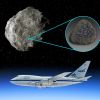 +28 +4
+28 +4Scientists identify water molecules on asteroids for the first time
Using data from the retired Stratospheric Observatory for Infrared Astronomy (SOFIA)—a joint project of NASA and the German Space Agency at DLR—Southwest Research Institute scientists have discovered, for the first time, water molecules on the surface of an asteroid.
Submit a link
Start a discussion




















